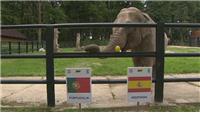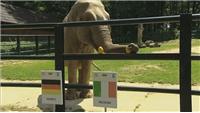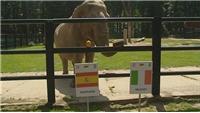
Kyiv

Province: Kyiv Oblast
Population: 2,820,000
Area: 839km²
Kiev or Kyiv is the capital and the largest city of Ukraine, located in the north central part of the country on the Dnieper River.
Kiev is an important industrial, scientific, educational and cultural centre of Eastern Europe. It is home to many high-tech industries, higher education institutions and world-famous historical landmarks.
THINGS TO SEE
Kyiv is a modern city with many monuments, more than 100 museums, 33 theatres and 141 libraries. The country's leading universities are also concentrated here, including the Kyiv-Mohyla Academy, one of the oldest educational institutions in Europe.
Around the corner from the Valeriy Lobanovskiy Stadium, Khreshchatyk street runs through its heart and getting dressed up and strolling down it is a Kyivan pastime, especially at weekends when it is closed to traffic. The street was razed during World War Two and rebuilt in imposing Soviet style, but the city is not short on aesthetics. St Sophia Cathedral's incredible eleventh-century mosaics and frescos springs to mind, the scene of coronations, countless ceremonies and Kyiv's first school and library.
Much of the left bank lies on reclaimed land and a perhaps unforeseen benefit was the creation of city beaches. There are some on Trukhaniv island and on Hydropark, with incredible views of the UNESCO-listed Lavra. Of a rather different tack – but no less eye-catching – is the Hydropark's free outdoor gym, a post-apocalyptic collection of apparatus fashioned from used lorry parts and scrap metal.
Fan zone: Maidan Nezalezhnosti (Independence Square)
Kyiv's fan zone, located right in the heart of in the city, will feature four giant screens and will open for the duration of the tournament from 12.00 to 01.00 local time. It is free to enter and will broadcast all 31 matches live, though at other times there will be plenty of entertainment such as football skill tests, five-a-side pitches, live concerts and DJ sets, as well as offer a full range of food and beverages.
TRANSPORT
To and from
Kyiv has two airports, Zhulyany (8km south-west of the city centre) and Boryspil International (35km east). The latter has regular services to Warsaw, Lviv, Kharkiv and Donetsk. The Central Bus Station 3km south of the centre offers longer but somewhat cheaper links to other UEFA EURO 2012 venues: Lviv (10 hours), Kharkiv (7 hours) and Donetsk (11.5 hours). The swish train terminal in the heart of the city has connections, many overnight, to Kharkiv (from 6 hours), Lviv (from 6.5 hours), Donetsk (12 hours), Warsaw (from 15 hours), Poznan (18 hours) and Wroclaw (25 hours).
Distances to other UEFA EURO 2012 venues
Kharkiv–480km Lviv–540km Donetsk–700km
Warsaw–820km Wroclaw–1,090km Poznan–1,140km Gdańsk–1,190km
In and around
Public transport includes buses, trolleybuses, trams and an ever-expanding metro system. The metro is usually the fastest and most convenient way of getting around, even if the descent to the depths of the city can be a journey in itself – at 102m underground, Arsenalna is one of the deepest stations in the world. It runs from 6am until midnight and the turquoise journey tokens cost 2 UAH; a monthly pass is 95 UAH. Like many former Soviet metro systems, stations are clean and elaborately decorated, a contrast to the somewhat less reliable bus service as they have to contend with Kyivan traffic.
Olympic Stadium, Kyiv

Ukraine's national home was once the Red Stadium of Lev Trotsky attracting crowds of over 100,000.
UEFA Capacity: 60,000
Record attendance: 102,000 (2-0 FC Dynamo Kyiv v FC Bayern München on 16/03/1977)
Opened: 1923 (reopened October 2011)
Located at the foot of city's central Cherepanov Hill in Pechersk, the venue started life as the Red Stadium of Lev Trotsky and has enjoyed numerous face-lifts (minor and major) since.
The latest stadium reconstruction, from December 2008 to October 2011, saw the demolition and rebuilding of the lower tier, a new West Stand with a two-level press box or VIP seats between the two tiers and the addition of a new transparent roof.
Andriy Yarmolenko scored the first goal at the renovated Olympic Stadium on 11 November 2011, a crowd of 70,000 in attendance as Ukraine led 2-0 and 3-1 before drawing 3-3 with Germany.
It has had several monikers, too. It became simply the Red Stadium before being renamed the Republican Stadium in 1936 and, barring a 17-year stint as the Central Stadium (1962 to 1979), kept the title until 1996. Then it adopted its current Olympic name, a nod to the 1980 Moscow Olympics when it hosted seven games.
Because there were no seats the venue often exceeded its official 100,062 capacity. Newspapers used to just report attendance as being 'chock-full'.
Hot News
- Funny Balotelli!
- Spanish fans celebrate Euro Cup win
- That's German WAGS!
- The sexy female fans in Euro 2012
- Euro 2012: Spain fans celebrate victory
- Spain vs Italy in clash of the Euro WAGs
- Euro 2012 Final - Spain 4 : 0 Italy, Part 2
- Germany knocked out by Italy
- Natalia Siwiec blasts Sol and the BBC
- Coleen Rooney reveals her bikini body secrets
- Italy's fans celebrated wildly
- Euro 2012 Final - Spain 4 : 0 Italy, Part 1
| Rank | Team | W/D/L | Pts |
|---|
Cities & Stadiums
The Top 3 Teams of Previous Tournaments
| Year | Winners | Runner-up | Third place |
|---|---|---|---|
| 2008 | Spain | Germany | Russia / Turkey |
| 2004 | Greece | Portugal | Netherlands / Czech Republic |
| 2000 | France | Italy | Netherlands / Portugal |
| 1996 | Germany | Czech Republic | France / England |
| 1992 | Denmark | Germany | Netherlands / Sweden |
| 1988 | Netherlands | Soviet Union | Italy / West Germany |
| 1984 | France | Spain | Denmark / Portugal |
| 1980 | West Germany | Belgium | Czechoslovakia |
| 1976 | Czechoslovakia | West Germany | Netherlands |
| 1972 | West Germany | Soviet Union | Belgium |
| 1968 | Italy | Yugoslavia | England |
| 1964 | Spain | Soviet Union | Hungary |
| 1960 | Soviet Union | Yugoslavia | Czechoslovakia |



